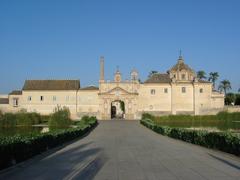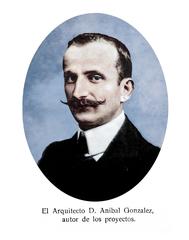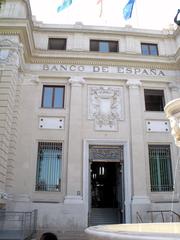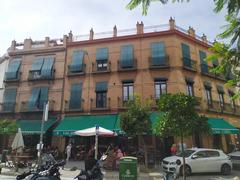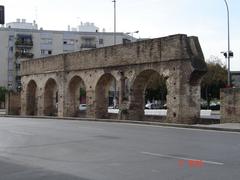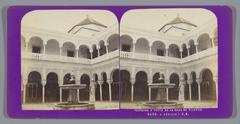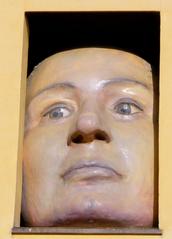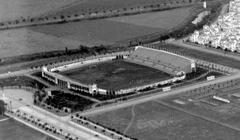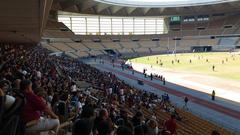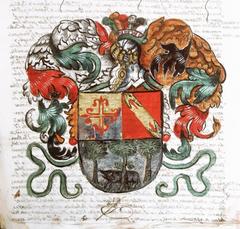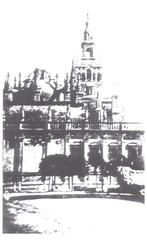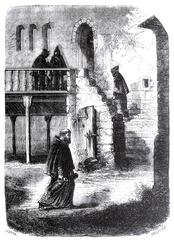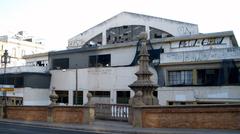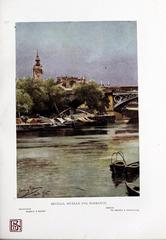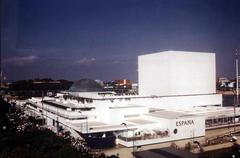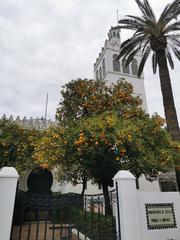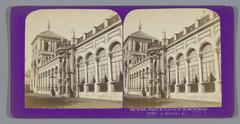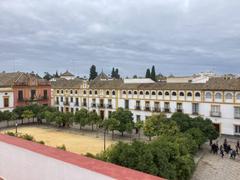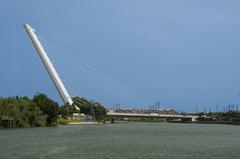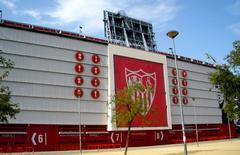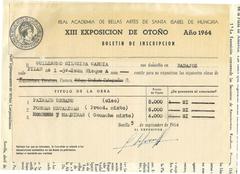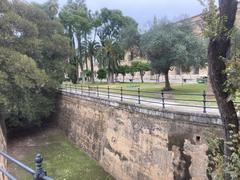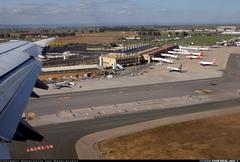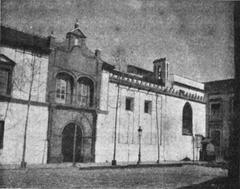
Isabel II Bridge (Triana Bridge) Seville: Complete Guide to Visiting, History, and Local Experiences
Date: 03/07/2025
Introduction
The Isabel II Bridge, universally known as the Triana Bridge, stands as a symbol of Seville’s historical depth and cultural vitality. Spanning the Guadalquivir River, it links the city’s historic core to the spirited Triana neighborhood, serving as both a vital urban artery and an emblem of Andalusia’s industrial heritage. With its distinctive 19th-century iron arches, rich backstory, and proximity to some of Seville’s best gastronomic and cultural offerings, the bridge offers visitors an immersive local experience (turismosevilla.org; barcelo.com; wikipedia).
Contents
- Origins and Historical Context
- Construction and Engineering Highlights
- Architectural Features
- Visiting Hours, Tickets, and Accessibility
- Practical Travel Tips
- Nearby Attractions
- Guided Tours and Special Events
- Photographic Opportunities
- Dining and Tapas Culture
- Nightlife and Drinks
- Frequently Asked Questions (FAQs)
- Summary and Visitor Recommendations
- Sources and Further Reading
Origins and Historical Context
Long before the current iron structure, the site was marked by a floating pontoon bridge, the “bridge of boats,” which the Moors established in 1171 under Almohad Caliph Abu Yacub Yusuf. This early crossing, composed of thirteen wooden boats chained together, was essential for merchants, travelers, and military campaigns, notably during the Reconquest of Seville in 1248 and the Peninsular War (barcelo.com). However, frequent floods and heavy use made it unreliable and unsafe (visit-seville.com).
Construction and Engineering Highlights
By the mid-19th century, Seville needed a stable, modern crossing. Construction on the new bridge began in 1845 and concluded in 1852, during the reign of Queen Isabella II—giving the bridge its official name. French engineers Ferdinand Bernadet and Gustave Steinacher led the project, drawing inspiration from Paris’s Pont du Carrousel and employing the Polonceau style, which was innovative for its time (wikipedia; seville-city.com). The cast iron components were forged locally, showcasing Seville’s industrial prowess.
Architectural Features
The Isabel II Bridge, Spain’s oldest preserved iron bridge, stretches approximately 140 meters in length and 7 meters in width. Its three elegant cast iron arches rest on robust stone abutments, and its decorative iron railings and stonework embody both function and artistry. Originally, wooden elements were incorporated, later replaced with steel beams to support modern loads, including early electric trams (introducingseville.com). The bridge’s symmetry and decorative detail continue to inspire artists and photographers (sevillasecreta.co).
Visiting Hours, Tickets, and Accessibility
- Opening Hours: The bridge is accessible 24 hours a day, all year round.
- Tickets: There is no entrance fee; crossing the bridge—on foot or by bicycle—is free for everyone.
- Accessibility: Smooth, wide walkways accommodate pedestrians, cyclists, and those with mobility challenges, including wheelchair users. The bridge has gentle ramps at both ends (visit-seville.com; visitasevilla.es).
Practical Travel Tips
- Best times to visit: Early mornings and late afternoons provide beautiful lighting and fewer crowds—ideal for photography.
- Getting there: The bridge is a short walk from Seville’s city center and is well-served by local buses, with stops near Plaza de Cuba and Plaza del Altozano.
- Parking: Limited near the historic center; public transport or walking is advised.
- Safety: The area is well-lit and generally safe. Remain mindful of your belongings, especially during festivals.
Nearby Attractions
- Triana Market (Mercado de Triana): A lively market offering Andalusian produce and cuisine.
- Chapel of Carmen: A picturesque chapel at the Triana end of the bridge.
- Royal Parish Church of Santa Ana: A historic church known for its architecture and religious festivities.
- Castillo de San Jorge: Remnants of a medieval fortress, now a museum on the Inquisition era.
- Calle Betis: A vibrant riverside street lined with tapas bars and flamenco venues (andaluciamia.com).
Guided Tours and Special Events
Many walking tours include the Isabel II Bridge and Triana’s highlights, with options for daytime and illuminated night tours. During major festivities such as Semana Santa (Holy Week) and Velá de Santa Ana, the bridge becomes a focal point for processions and local celebrations (barcelo.com; tripaim.com).
Photographic Opportunities
Panoramic views from the bridge include the Guadalquivir River, Torre del Oro, and Seville Cathedral. Its ornate ironwork and arches make it a favorite for close-up shots. Sunrise and sunset are particularly striking, with city lights reflecting on the water at dusk (visitanddo.com).
Dining and Tapas Culture
Culinary Highlights Near the Isabel II Bridge
Triana is a culinary hotspot, known for its vibrant tapas scene and riverside dining (TravelCurious). Essential experiences include:
- Tapas Bars: Las Golondrinas (grilled mushrooms with alioli), Sol y Sombra (sausages, cheeses), Casa Ruperto (“pajaritos” fried quails), and classic pringá at Bodeguita Romero.
- Restaurants: De la O for modern Andalusian cuisine with river views; Maria Trifulca for seafood and panoramic vistas.
- Fine Dining: Cañabota (Michelin-starred, seafood-focused tasting menus).
Prices range from €2–€5 per tapa, €12–€25 for main dishes, and €60–€120 for tasting menus (cntraveller.com).
Tapas Culture and Etiquette
- Tapas are meant to be shared and enjoyed over conversation, often late into the evening.
- Locals dine late, with dinner typically after 9:00 pm.
- Reservations are advised for riverside or popular establishments.
Dining with a View
Riverside terraces on Calle Betis offer prime spots for sunset drinks or dinners with views of the illuminated bridge (LiveTheWorld).
Nightlife and Drinks
After dark, the area around the bridge bustles with activity. Bars serve local wines, sherries, and craft beers, often with live music or flamenco, especially along Calle Betis and nearby squares (TravelCurious).
Frequently Asked Questions (FAQs)
Q: Are tickets required to cross the Isabel II Bridge?
A: No, the bridge is open and free to all visitors, day and night.
Q: Is the bridge wheelchair accessible?
A: Yes, with smooth, wide walkways and gentle ramps.
Q: What are the best times for photography?
A: Early morning and sunset provide the most striking light.
Q: What attractions are nearby?
A: Triana Market, Chapel of Carmen, Royal Parish Church of Santa Ana, Castillo de San Jorge, and Calle Betis.
Q: Are guided tours available?
A: Yes, many local companies offer guided walks including the bridge and Triana district.
Q: Where can I find authentic tapas nearby?
A: Las Golondrinas, Sol y Sombra, and Casa Ruperto are local favorites.
Summary and Visitor Recommendations
The Isabel II Bridge is more than a functional crossing—it is a living monument encapsulating Seville’s evolution, engineering innovation, and community spirit. Open 24/7 and free to access, it welcomes all—history buffs, architecture fans, food lovers, and travelers seeking genuine local culture. From its panoramic viewpoints to its role in grand festivities, and its proximity to some of Seville’s best culinary experiences, the bridge is an essential stop on any itinerary (sevillasecreta.co; visitanddo.com; andaluciamia.com).
For an enriched visit, consider joining a guided tour and plan to explore Triana’s markets, tapas bars, and flamenco venues. For up-to-date information and custom itineraries, download the Audiala app and follow us on social media.
Sources and Further Reading
- turismosevilla.org
- barcelo.com
- wikipedia
- visitanddo.com
- carrotsandtigers.com
- visitasevilla.es
- sevillasecreta.co
- TravelCurious
- LiveTheWorld
- andaluciamia.com
- tripaim.com



